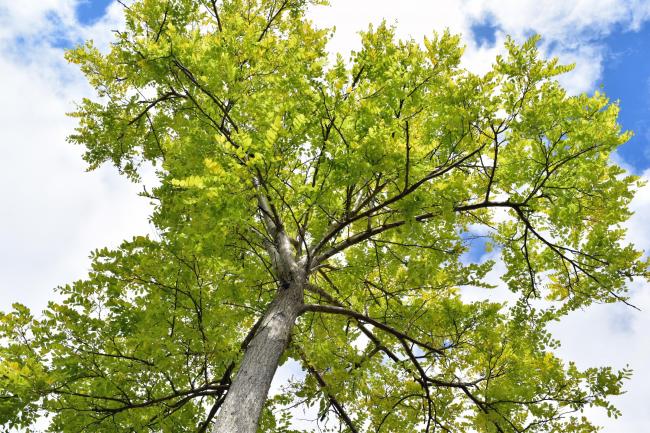Sheffield and Rotherham Wildlife Trust (SRWT) have developed and will start to implement an extensive Ash Dieback Action Plan. All of the Ash across the 15 SRWT nature reserves have been identified and inspection will begin shortly and repeated annually.
Ash dieback (ADB) is a highly destructive fungal disease affecting ash trees. It causes leaf loss and canopy decline and in some cases causes the trees to die. The disease was first officially recorded in the UK in 2012 and is now widespread across England, Wales and Scotland (the Tree Council, Ash Dieback Disease – a guide for tree owners). Ash trees are common in the UK and whilst not the major component of woodlands in Sheffield we do have a number on our nature reserves. It is inevitable that all ash trees will be exposed to it (including those near roads or public rights of way); experience from the continent shows that we can expect 70-95% of ash trees to die over the next two or three decades. Some locations will experience this loss more rapidly. There is no cure for ash dieback and it is not possible to prevent its spread. The aim of management is to try and reduce the impact of the disease in terms of Sheffield and Rotherham Wildlife Trust (SRWT) objectives. Host density has been found to be important for disease development, with ash at a low density being less affected by ash dieback (Arboricultural Association). It would appear that its spreading from the South West to the North East, so sites such as Blacka Moor will probably be impacted earlier than sites in Rotherham.
As with any trees on our land the Trust has a responsibility to ensure the risk is kept within acceptable limits. A small proportion of trees may have ‘genetic tolerance’ to the disease, so it is not deemed best practice to pre-emptively fell ash trees (unless part of normal woodland management).
What is ash dieback?
The disease is caused by a fungus that arrived into Europe in the 1990s and rapidly spread. Research has found that 70-95% of trees may succumb to the disease. The fungus progressively damages the vascular tissue of trees resulting in dieback often at the crown. The disease can also manifest itself in bark lesions but this tends to be in wet woodland situations which is less relevant to us (Tree Council, Ash Dieback Toolkit). These lesions can be caused by other diseases, so in this situation professional advice is required. The fungus causes dead or dying branches to fall and can eventually kill a tree or allow other pathogens e.g. honey fungus to accelerate wood decay and lead to its eventual death.
How important are ash trees?
Whilst only a small component of Sheffield’s woods (about 5%), ash trees are very valuable for wildlife and are valued by people. They support almost 1000 species including lichens, invertebrates and other wildlife. No one tree can entirely replace ash but this situation does provide an opportunity to create more resilient woods for the future. There could also be some positives through the creation of deadwood and by providing more light to the understorey. If any veteran ash trees are identified there needs to be special consideration given, due to their likely biodiversity and cultural value.
What actions are included in the Ash Dieback Action Plan?
We are able to carry out this essential action plan thanks to our members, volunteers and supporters. The below steps are included in the action plan:
- Survey to establish number of ash trees
- Map all ash trees
- Survey condition of ash trees and repeat annually
- Professional tree work to manage any dangerous trees by roads/properties
- Professional tree survey
For further information see Ash Dieback – a guide for tree owners, The Tree Council, 2020 – https://treecouncil.org.uk/science-and-research/ash-dieback/public-guidance/
